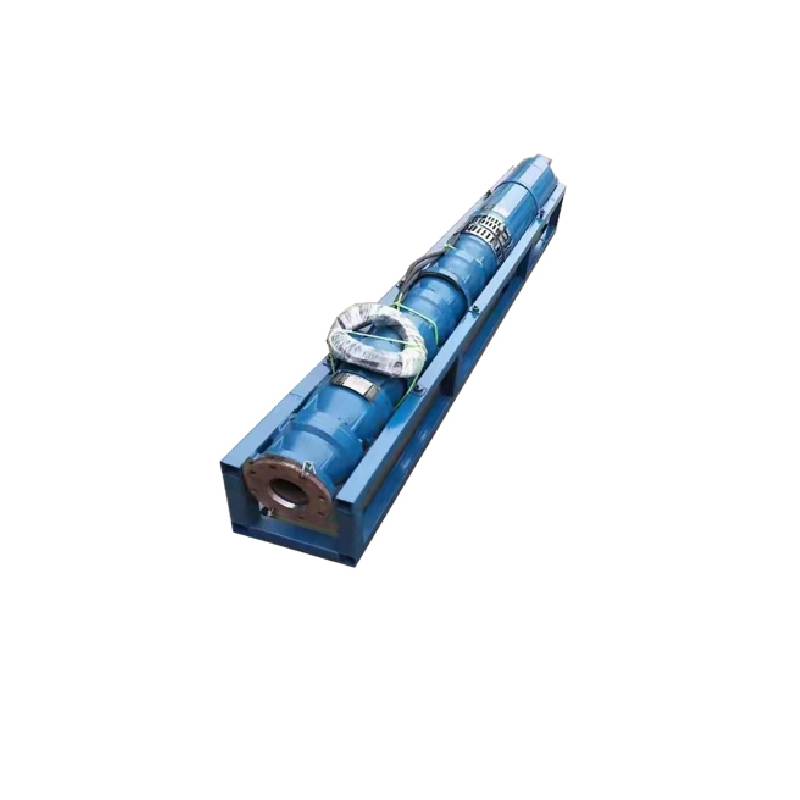Aug . 11, 2024 20:36 Back to list
High-Efficiency Submersible Water Pumps Designed for High Pressure Applications in Various Industries
High-Pressure Submersible Water Pumps An Essential Tool for Efficient Water Management
High-pressure submersible water pumps are specialized devices designed to efficiently transfer water in a variety of applications, from agriculture and irrigation to sewage and industrial processes. These pumps operate underwater, providing an effective solution for moving water from deep sources, such as wells, lakes, and reservoirs, to the surface where it is needed. With their ability to generate high pressure, they are especially useful in situations where water needs to be lifted from significant depths or pushed through long pipelines.
Design and Functionality
The main components of a high-pressure submersible water pump include the motor, impeller, and discharge outlet. Encased in a robust, waterproof housing, the motor drives the pump's impeller, which creates the necessary pressure to move water upward. The design of these pumps allows them to be submerged entirely in water, reducing the need for complicated suction systems that are common in above-ground pumps. This submersion not only minimizes the risk of cavitation—an issue that can severely affect pump performance—but also keeps the unit cool during operation.
Applications
High-pressure submersible water pumps are versatile tools used in various sectors
1. Agriculture In farming, these pumps are crucial for irrigation systems, particularly in areas where groundwater extraction is necessary. They can efficiently draw water from deep wells, ensuring that crops receive the necessary hydration even during dry spells.
2. Construction Construction sites often face the challenge of groundwater intrusion. High-pressure submersible pumps are used to dewater foundations and excavations, ensuring a dry working environment that facilitates timely project completion.
high pressure submersible water pump

3. Sewage and Wastewater Management These pumps are also essential in sewage treatment plants. They help manage wastewater by pumping it from collection points to treatment facilities, thereby ensuring the efficiency of the sewage system.
4. Industrial Use Factories and manufacturing plants often require water for cooling, processing, or cleaning. High-pressure submersible pumps can assist in these applications, maintaining optimal operational efficiency.
Advantages
The advantages of high-pressure submersible water pumps are numerous. First, their ability to operate at varying depths makes them suitable for diverse environments and conditions. Second, they generally consume less energy compared to traditional above-ground pumps, making them a more cost-effective choice for long-term operations. Additionally, their compact design and ease of installation reduce the need for extensive infrastructure, allowing for quicker deployment and minimal disruption.
Challenges and Considerations
While high-pressure submersible water pumps offer many benefits, they are not without challenges. Maintenance of these pumps is crucial; failure to regularly check components such as seals and bearings can lead to premature wear and malfunction. Additionally, selecting the appropriate pump for a specific application requires careful consideration of factors such as flow rate, total dynamic head, and the type of fluid being pumped.
Conclusion
In conclusion, high-pressure submersible water pumps play a vital role in modern water management across various industries. Their efficiency, versatility, and effective performance make them an invaluable tool for addressing the growing water demands of agriculture, construction, wastewater management, and industrial processes. By understanding their functionalities and applications, users can maximize the benefits these pumps offer and ensure sustainable water management practices for the future. As technological advancements continue to emerge, the evolution of high-pressure submersible pumps will likely lead to even greater efficiencies and capabilities, further solidifying their importance in water management systems.
-
Submersible Water Pump: The Efficient 'Power Pioneer' of the Underwater World
NewsJul.01,2025
-
Submersible Pond Pump: The Hidden Guardian of Water Landscape Ecology
NewsJul.01,2025
-
Stainless Well Pump: A Reliable and Durable Pumping Main Force
NewsJul.01,2025
-
Stainless Steel Submersible Pump: An Efficient and Versatile Tool for Underwater Operations
NewsJul.01,2025
-
Deep Well Submersible Pump: An Efficient 'Sucker' of Groundwater Sources
NewsJul.01,2025
-
Deep Water Well Pump: An Efficient 'Sucker' of Groundwater Sources
NewsJul.01,2025
-
 Submersible Water Pump: The Efficient 'Power Pioneer' of the Underwater WorldIn the field of hydraulic equipment, the Submersible Water Pump has become the core equipment for underwater operations and water resource transportation due to its unique design and excellent performance.Detail
Submersible Water Pump: The Efficient 'Power Pioneer' of the Underwater WorldIn the field of hydraulic equipment, the Submersible Water Pump has become the core equipment for underwater operations and water resource transportation due to its unique design and excellent performance.Detail -
 Submersible Pond Pump: The Hidden Guardian of Water Landscape EcologyIn courtyard landscapes, ecological ponds, and even small-scale water conservancy projects, there is a silent yet indispensable equipment - the Submersible Pond Pump.Detail
Submersible Pond Pump: The Hidden Guardian of Water Landscape EcologyIn courtyard landscapes, ecological ponds, and even small-scale water conservancy projects, there is a silent yet indispensable equipment - the Submersible Pond Pump.Detail -
 Stainless Well Pump: A Reliable and Durable Pumping Main ForceIn the field of water resource transportation, Stainless Well Pump has become the core equipment for various pumping scenarios with its excellent performance and reliable quality.Detail
Stainless Well Pump: A Reliable and Durable Pumping Main ForceIn the field of water resource transportation, Stainless Well Pump has become the core equipment for various pumping scenarios with its excellent performance and reliable quality.Detail
